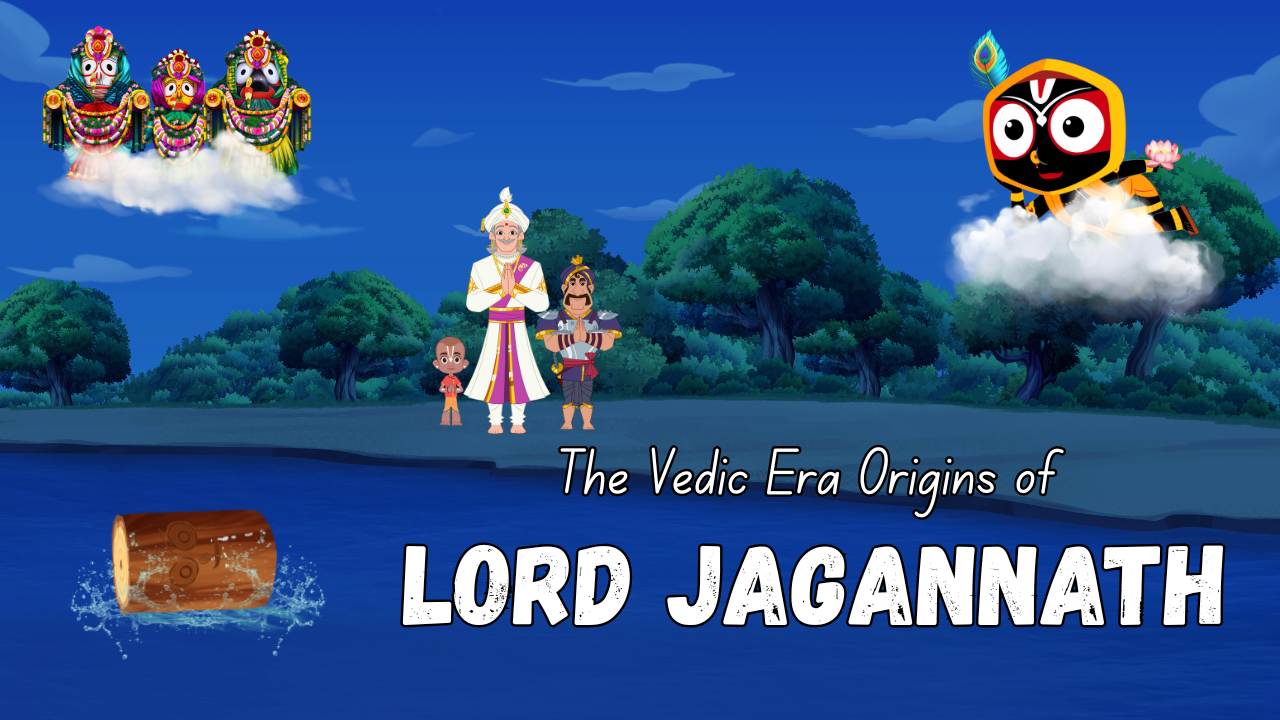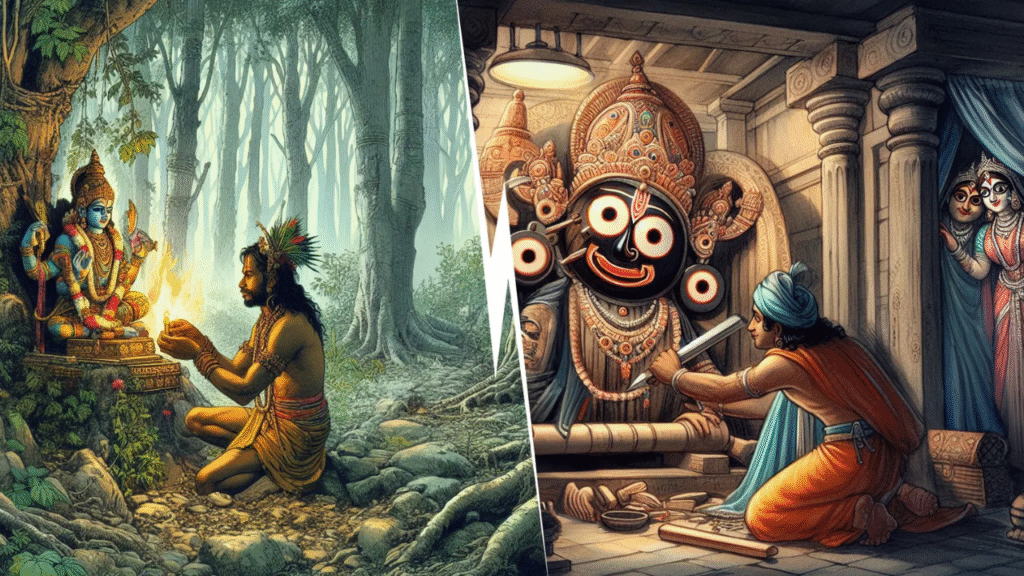
The Vedic Era Origins of Lord Jagannath: Early References and Sacred Myths
The Vedic Era Origins of Lord Jagannath. In the coastal town of Puri, the waves of the Bay of Bengal touch golden sands, and the sound of conch shells fills the air. Here lives Lord Jagannath, the “Lord of the Universe” — a deity whose story goes back to the Vedic age, when ancient hymns were first sung and the earliest ideas of God were written down.
Today, devotees know Him through the grand Rath Yatra and the sacred Mahaprasad. But his roots are a mix of Vedic wisdom, tribal worship, and timeless legends.
Hints of Jagannath in the Vedas
The Rigveda — the world’s oldest scripture — speaks about the Supreme Purusha (Cosmic Being) who is present in all creation. The Purusha Sukta tells how this eternal being gave Himself for the creation of the universe. This idea is similar to the belief that Lord Jagannath cares for and sustains all life.
Some scholars believe that mentions of Neela Purusha (blue-hued Lord) and Chakra Purusha (Lord with the cosmic wheel) in ancient texts could be early forms of Jagannath. The Atharva Veda also talks about the “Wheel of Time” — a concept seen in the Sudarshan Chakra kept beside Jagannath in the sanctum.
The Vedic Era Origins of Lord Jagannath
Long before the grand temple was built in Puri, the forests of Odisha were home to the worship of Neela Madhava, a wooden deity loved by the Sabara tribe. They worshipped Him not in a human form, but as a sacred wooden figure, showing their deep love for nature and the divine.
When Vedic traditions came to Odisha, they blended with this tribal worship. This mix created a unique tradition where both Brahmin priests and Sabara servitors serve the Lord even today — especially during Navakalevara, when new wooden idols are carved following ancient rules.

Myths Connecting Jagannath to the Vedas
a. The Cosmic Wheel
In the Vedas, the Chakra (wheel) is more than a weapon — it is the symbol of time and the cycle of life. The Sudarshan Chakra beside Jagannath represents this eternal truth: everything moves in cycles, from seasons to the lives of humans and kingdoms.
b. The Formless Purusha
Jagannath’s form — large eyes, incomplete limbs, and an open smile — is unlike other temple deities. This may represent the formless Purusha of the Vedas — God without limits, who still appears in a form that anyone can approach.
c. The Chariot Journey
The Rath Yatra has deep Vedic meaning. Ancient hymns speak of gods traveling in grand chariots across the heavens. In Puri, this journey is brought to life when the deities come out of the temple to meet their devotees, showing that God comes to us, not just the other way around.
d. The Yajna Connection
Some believe that Jagannath’s wooden form connects to the Yajna Purusha — the cosmic being of sacrifice in the Vedas. Just as the Purusha gave Himself for creation, Jagannath accepts a form that can be renewed, allowing Him to “die” and be “reborn” for His devotees’ sake.
A Tradition That Welcomes All
The joining of tribal customs with Vedic rituals shows that Jagannath is for everyone. His worship includes Sanskrit mantras and sacred fire offerings, but also folk songs, wooden idols, and open community meals. He represents the Vedic truth that God lives in all beings.
From Vedic Fire to Eternal Vision
Lord Jagannath’s story is more than history — it is a living link between the fire altars of the Vedic sages and the busy streets of Puri today. He has traveled through ages and cultures, yet His wide, loving eyes have never stopped watching over His devotees.


Leave a reply here
Your email address will not be published. Required fields are marked *